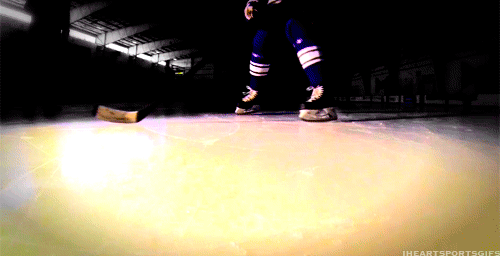Skating is one of the most fundamental aspects of hockey.
Without skating, there is no way you can be a professional
hockey player. The physics of ice skating is actually quite
interesting. There are two basic contacts between the skate and
the ice during the process of skating. One is the skate blade
gliding over the ice. The other is the edge of the blade grabbing the ice, creating friction to provide movement. According to
engineering tool box, the coefficient of friction for ice against
steel is .03, which is very low. This, of course, is when the
skate blade is not intentionally grabbing the ice.

http://giphy.com/gifs/hockey-ice-skating-o2mLdAbLN8Mr6

